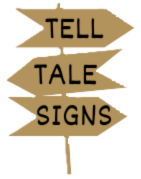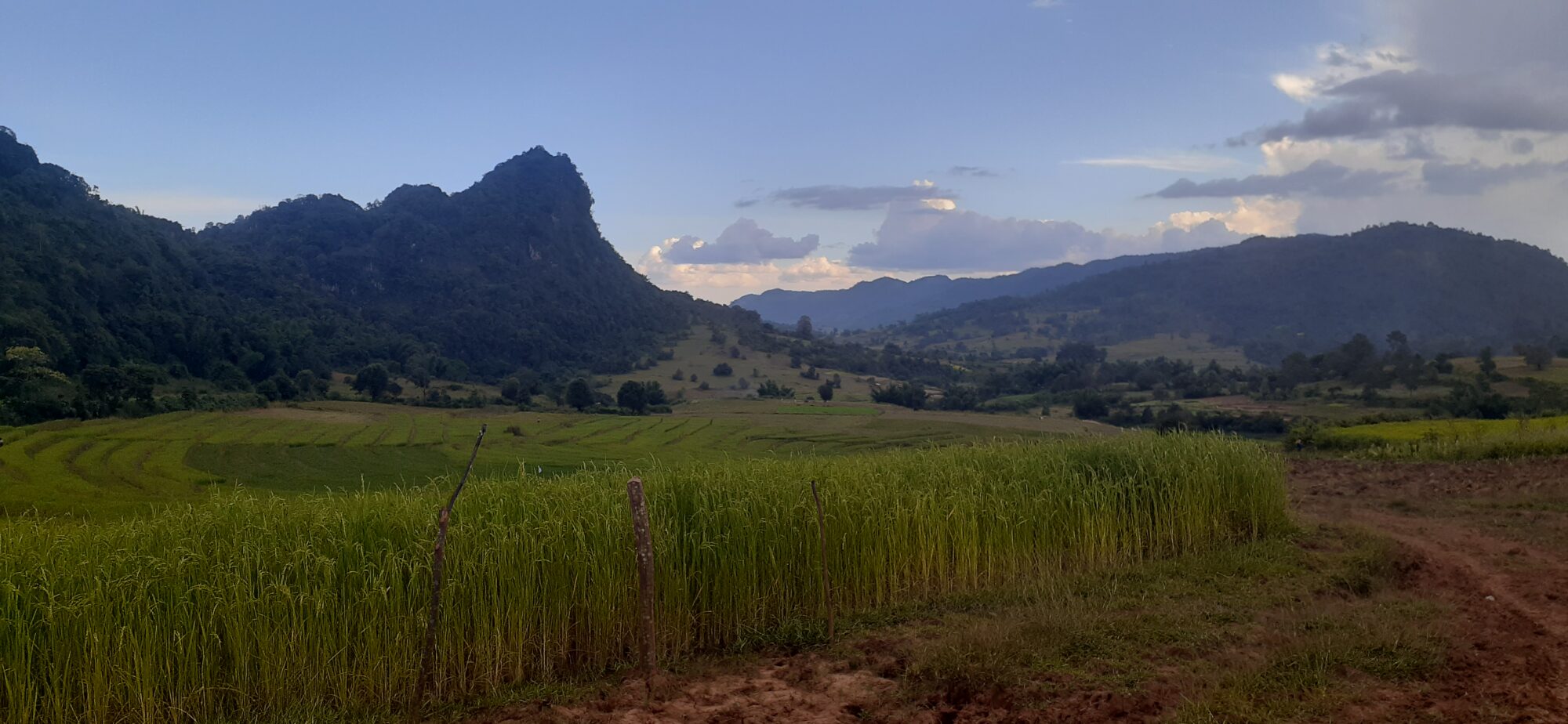Is it safe to travel in Myanmar?
Make sure you check here what the current safety travel advice is.
We visited in 2019, and although we needed to tweak our plans a little to avoid certain areas (or border crossings) we felt safe everywhere we went. Now (in 2024), we really do hope it’s safe to go back soon.
Hike information
Start : Kalaw
End : Inle Lake
Distance:- 55km over 3 days
Kalaw
As a fair-skinned Brit, I was relieved to arrive in Kalaw, having spent months in the Southeast Asia heat. The British used Kalaw as a hill station, as it is 1310 metres above sea level, making it cooler than the rest of the country. Following the Anglo-Burmese Wars, Myanmar became a British colony in 1824, gaining independence in 1948.
These Brits unfortunately didn’t exactly give off the best first impression to locals. They would ignore local customs deeming them ‘humiliating’. For example, they wouldn’t remove their shoes when entering buildings or pagodas. Therefore, we thought it was important to clue ourselves up on how to be a respectful traveller in Myanmar.
TIP: hand over money with your right hand, placing your left hand on your right elbow. Also if you’re sat down don’t stretch the soles of your feet towards another person (to the side is ok)
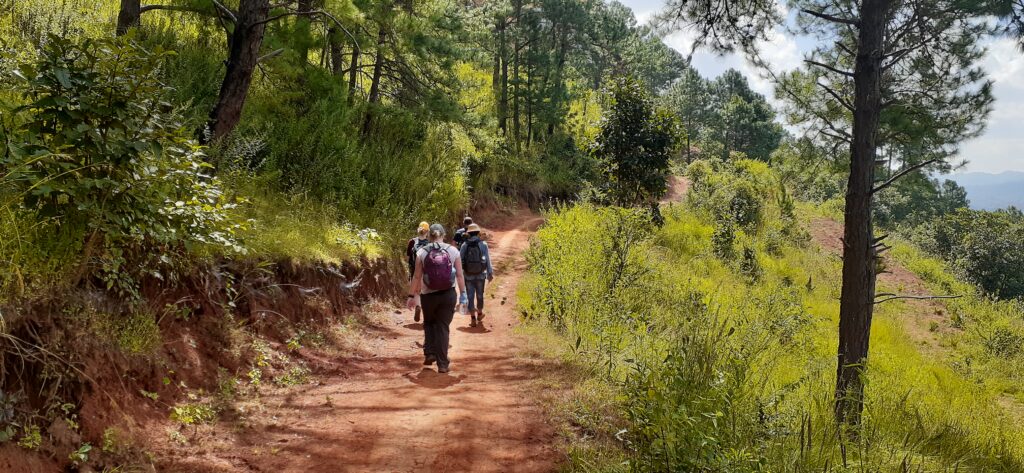
Kalaw’s location makes it a popular base for trekking as it is high up in the hills of Shan State.
There are a whopping 135 ethnic groups in Myanmar, all with different cultures and languages. We did a 3-day trek to Inle Lake to get a feel for local life in the villages on the way.
The hike took us through a couple of different villages, so we learnt variations of ‘hello’ and ‘thank you’ that we’d already mastered in Burmese.
How to arrange a guided walk
We were drawn to Myanmar as it is ‘off the beaten track’ so we were disappointed to hear this trek is quite popular amongst the tourists who do get to Myanamar. We chose to go with Jungle King as they advertise they do a slightly different route to other groups.
Find information on Trip Advisor or their Facebook page.
I’d recommend hiking with a guide because they can access homestays. They can also often speak the dialect, making the trip much more valuable and meaningful. Our guide Soomin chatted with us on the walks and they were conversations I cherished, and feel I learnt a lot about life in Myanmar.
The 3 day guided hike cost us just 38000 Kayt ($25) each for the trek, so as you can imagine the guide’s wage was not much at all. We all grouped together and tipped him well. We just wouldn’t expect to do essentially a 3-day shift for this amount. Please remember this when travelling to developing countries!
Day 1
We set off hiking on day 1 surrounded by beautiful views of surrounding mountains. We passed through a local village belonging to the Danu tribe. It was quiet as most were working in the fields, and the kids were at school. We passed through the school and there were lots of giggles, and high-fives as they probably wondered what on earth we were doing there.
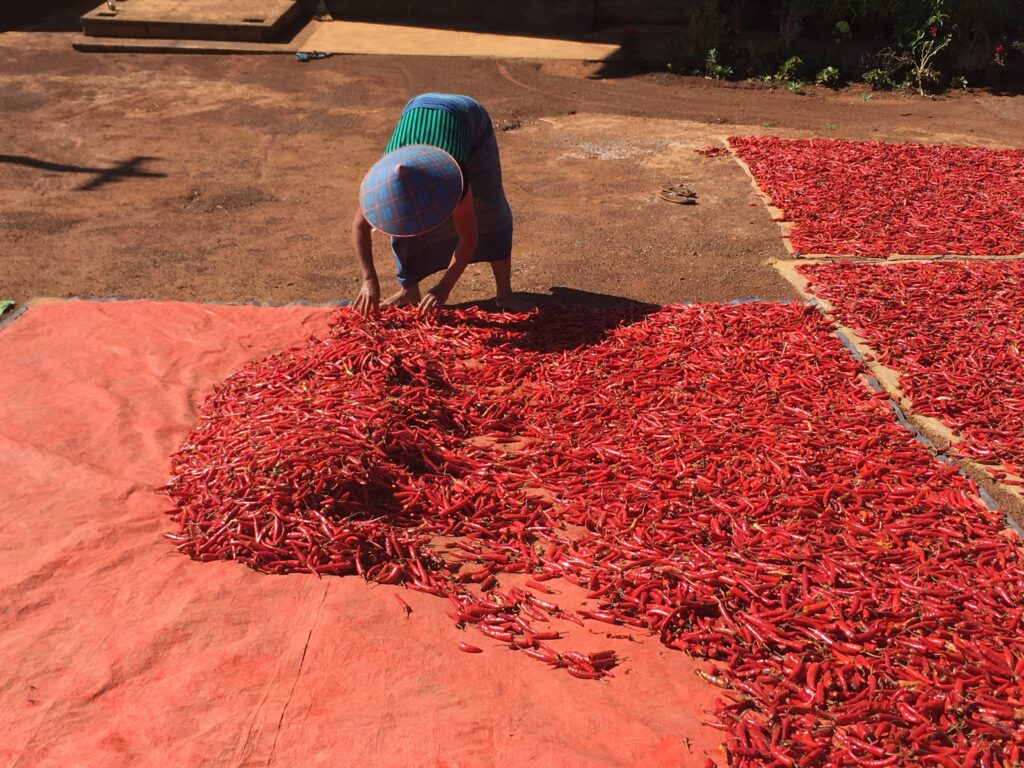
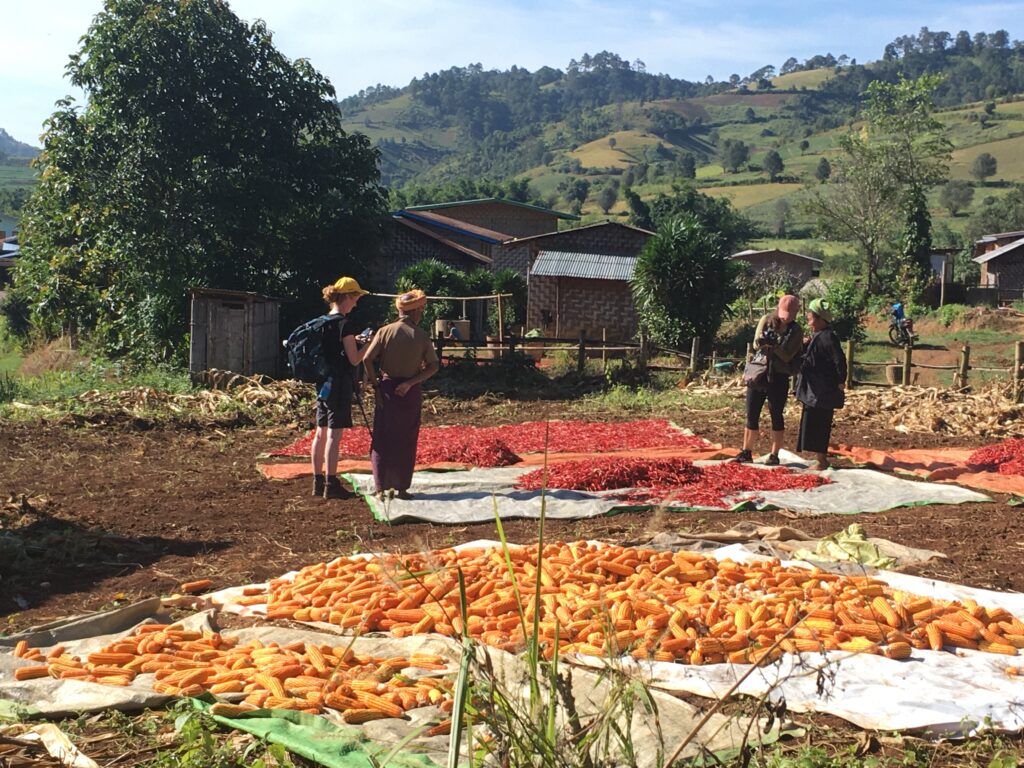
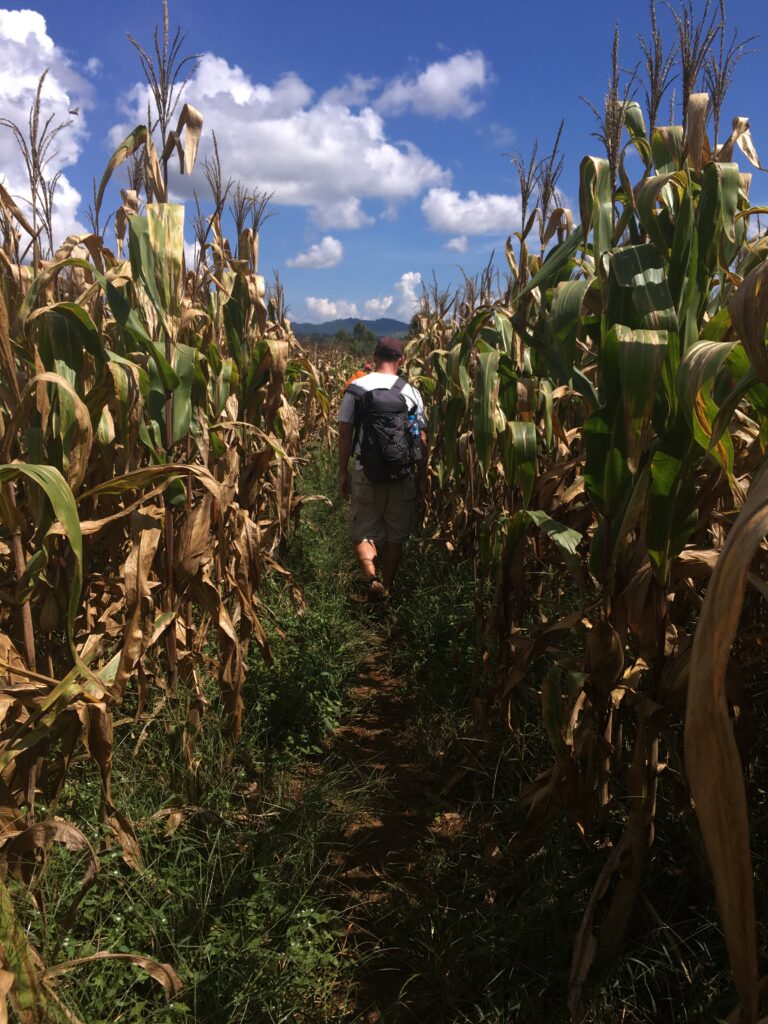
We passed through crop fields with a huge range from corn, chilli’s, rapeseed oil, bananas, peanuts – the lot! And buffalos – lots of buffalos!
We found this entertaining until our guide told us they can become quite aggressive – there were a few near misses, but we survived! We had a lovely group and bonded well naming ourselves the ‘buffalo soldiers’ which became the earworm of the trip.
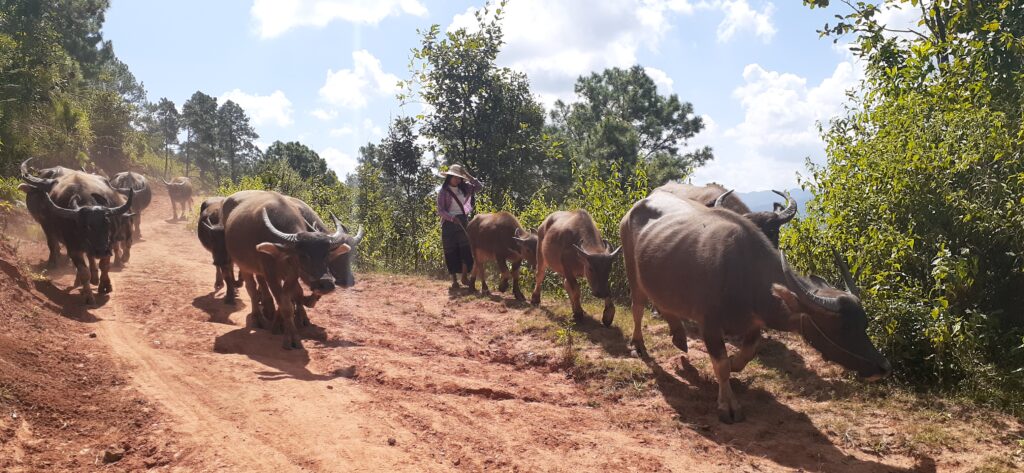
After walking 20km, we arrived at our homestay for the night within the Pa-O tribe. We were placed with a lovely couple in their traditional home constructed from bamboo. The house was on stilts, as most are, and their buffalo slept beneath us.
The host was heavily pregnant, and with the lack of a nearby hospital, we all started to weigh up which of the 5 of us had any skills in delivering babies – thankfully we didn’t have to!
After a bucket shower and a delicious home-cooked meal on the fire, we all settled into bed, giggling at the noise of the buffalo breathing beneath us.
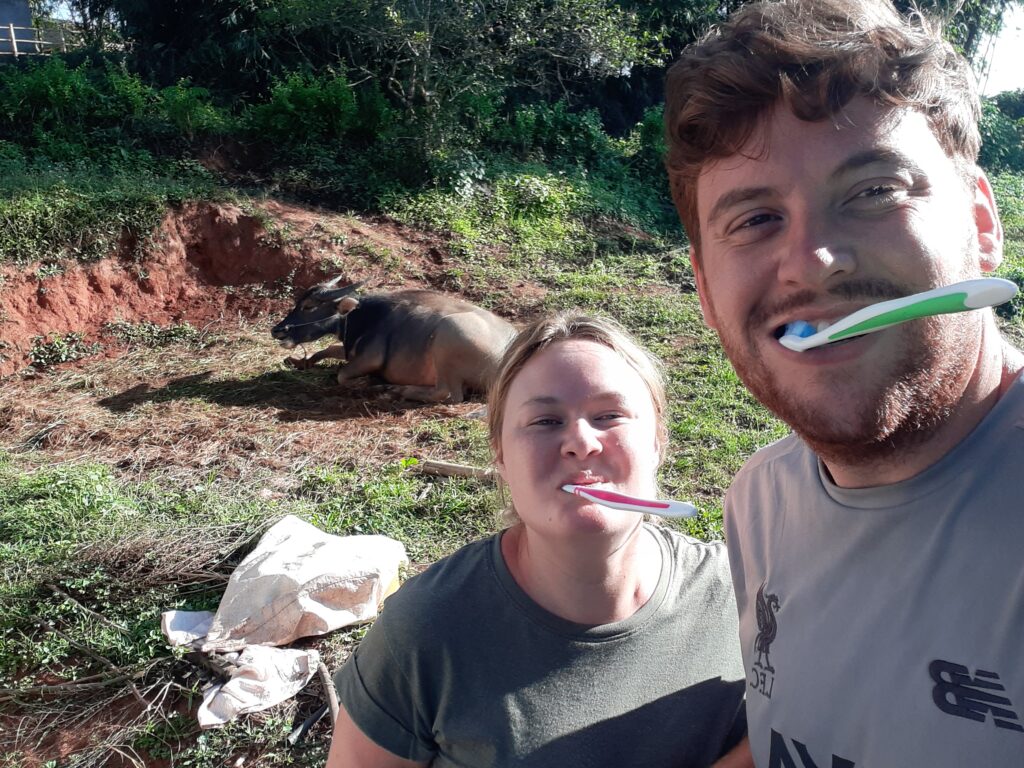
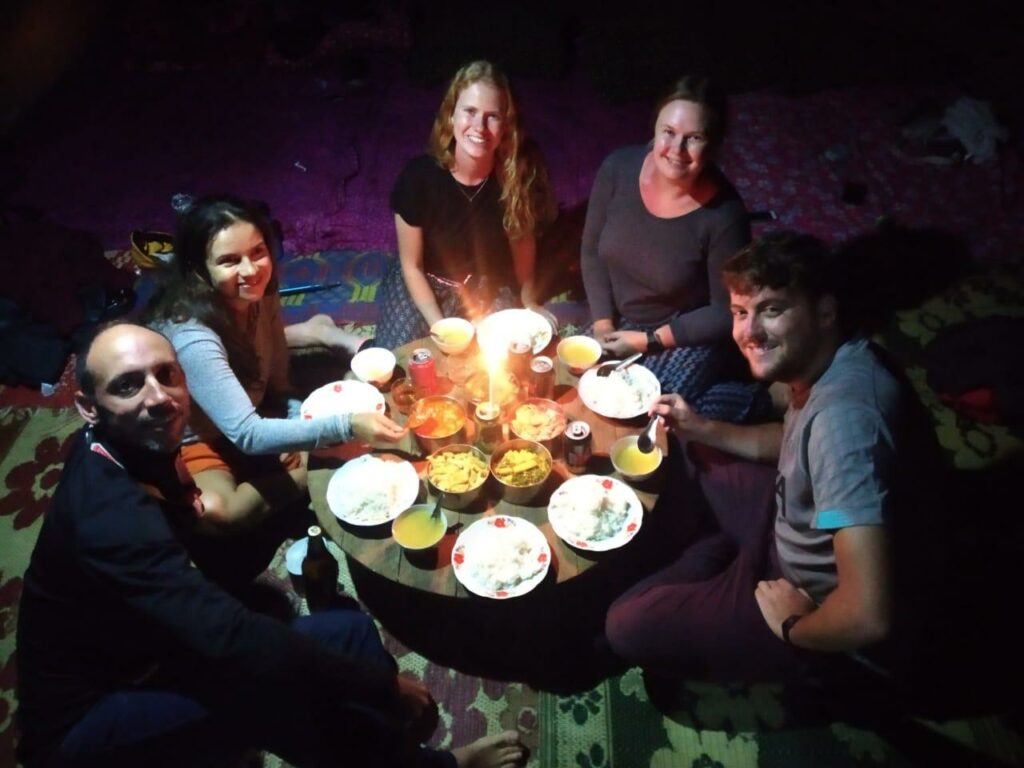
Day 2
After an amazing breakfast made from locally grown fresh produce such as avocados, we set off on day two.
Along the way we passed by many locals doing their everyday things. Separating chilis to sun dry them, washing clothes in buckets of water, and carrying crops between villages. I was struck with how hard they worked, and how little they got for it, yet how happy these people were.
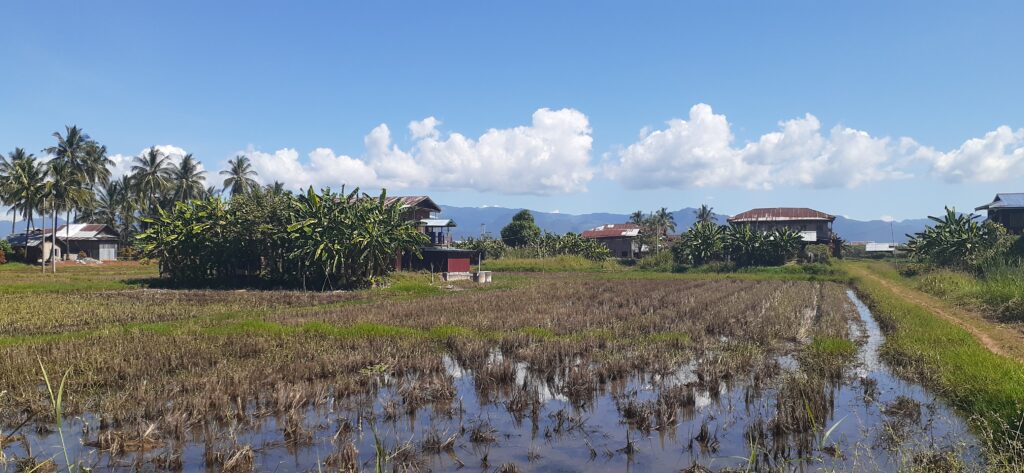
With Kalaw long behind us, the heat (and for me the blisters!) was getting to us. One of our fellow buffalo soldiers put some pants on her head to keep the sun off her neck. One by one we all followed suit and my god does it help!
We stopped by a nearby river to cool off before doing the last leg to a monastery where we stayed the night.
All of the Jungle King groups were staying there, so we shared the main hall, divided by bed sheet curtains for each group.
Day 3 – Arriving at Inle Lake
We hiked a total of 55km over the 3 days and arrived in Inle Lake, which is stunning.
The following day, we re-formed the buffalo soldiers and all split a long boat (total cost 15 000 kyat) to visit different parts of the lake.
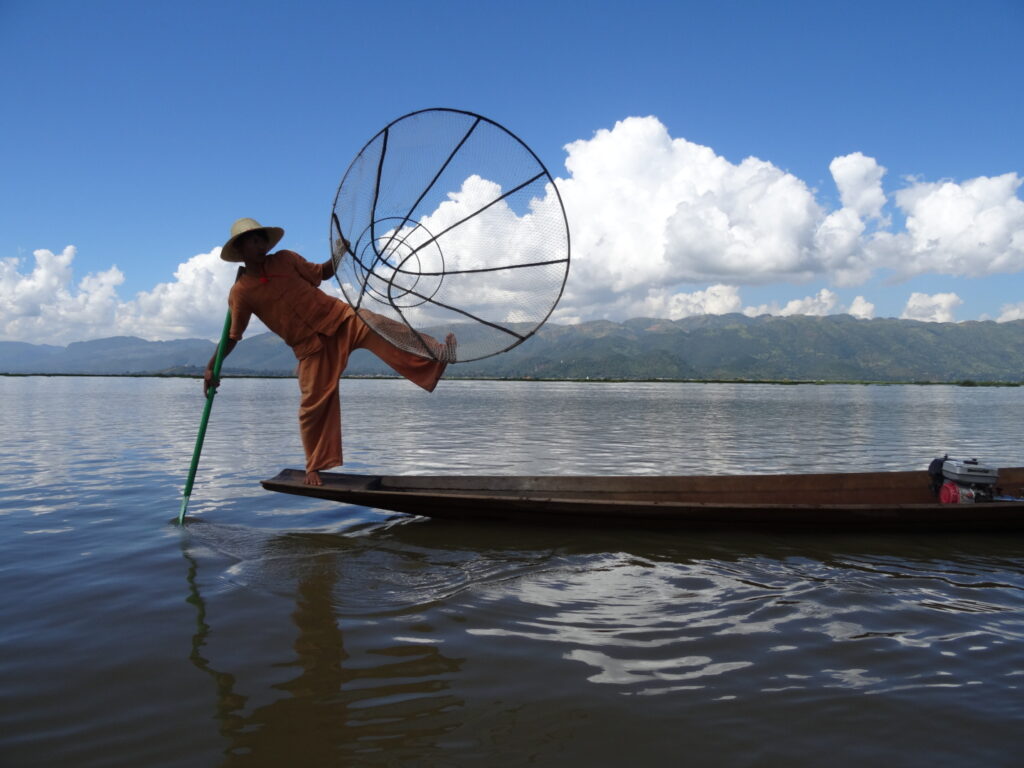
We visited a floating village where fishermen and their families live, and saw the famous ‘long necked ladies’. This tradition comes from a nearby village but it’s not 100% clear why it came about.
The girls from the age of 9, start to wear these rings on their necks, and increase them with age. The sign in the shop says they do it to protect themselves from tigers.
Our guide told us they do it because they believe in a specific Nat (spirt), that looks like a dragon so they do it to look like it. There are other theories on the internet, it seems the true meaning has been lost, perhaps in the name of tourism, or in communication.
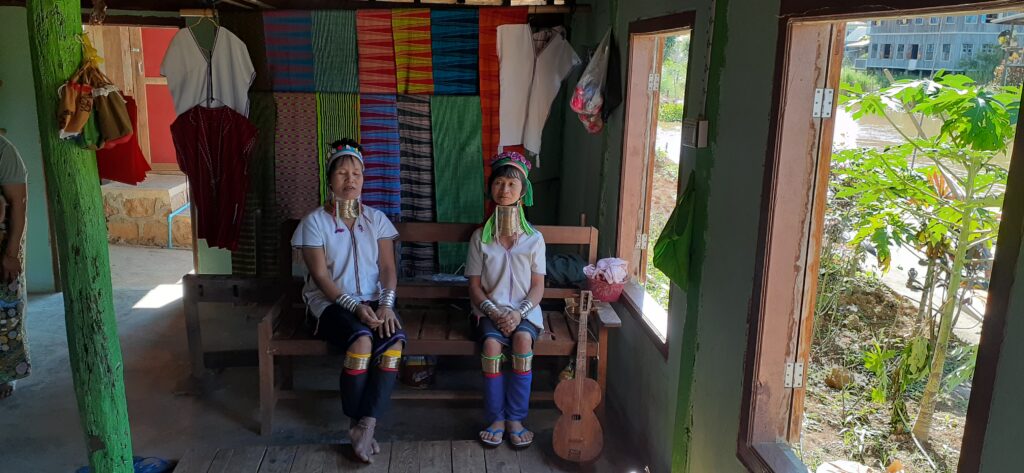
We visited Inpawkhon floating village, the only place in the world to weave lotus plants into textiles. We were shown around the workshop and got to see how the incredibly skilled people hand-weave lotus, silk, and cotton.
Of course there was a gift shop, but it was very reasonably priced even for a backpacker budget when you consider the hard work that’s gone into them.
The boat also took us to other places with skilled craftmakers of silver jewelry, cigars, and laquer woodwork. It was fascinating to see how these were made and learn more about the history of each craft in Myanmar.
Unique souvenirs in hand, we headed back on the boat towards Nyuang Shwe, the easiest town to visit Inle Lake from.
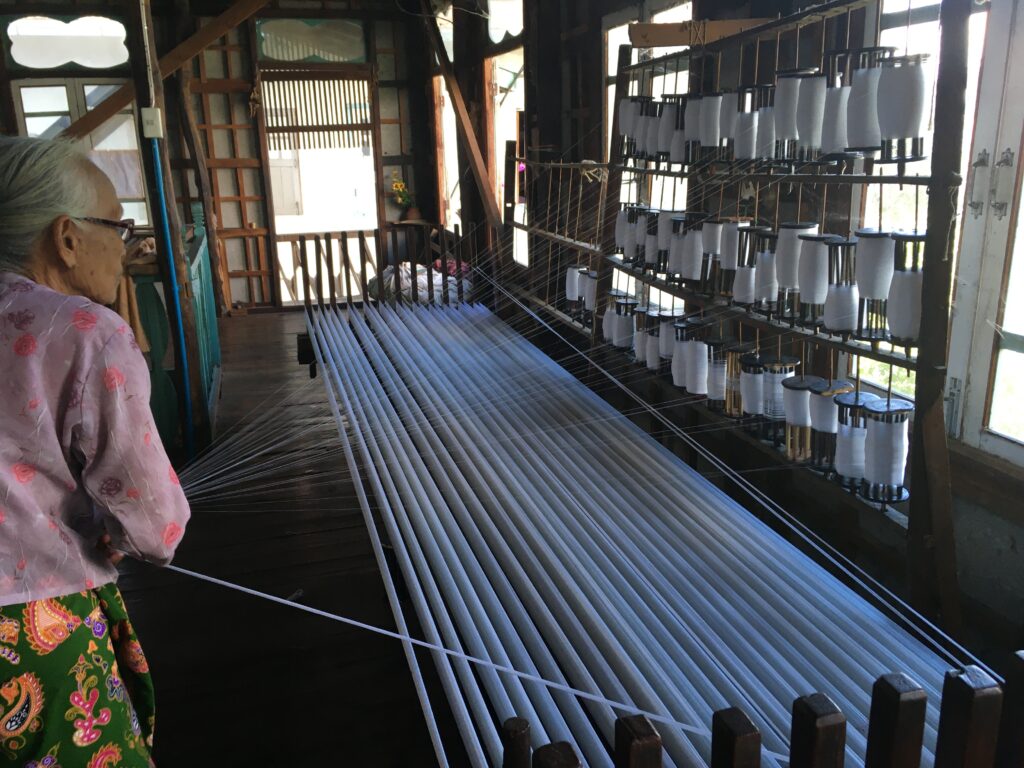
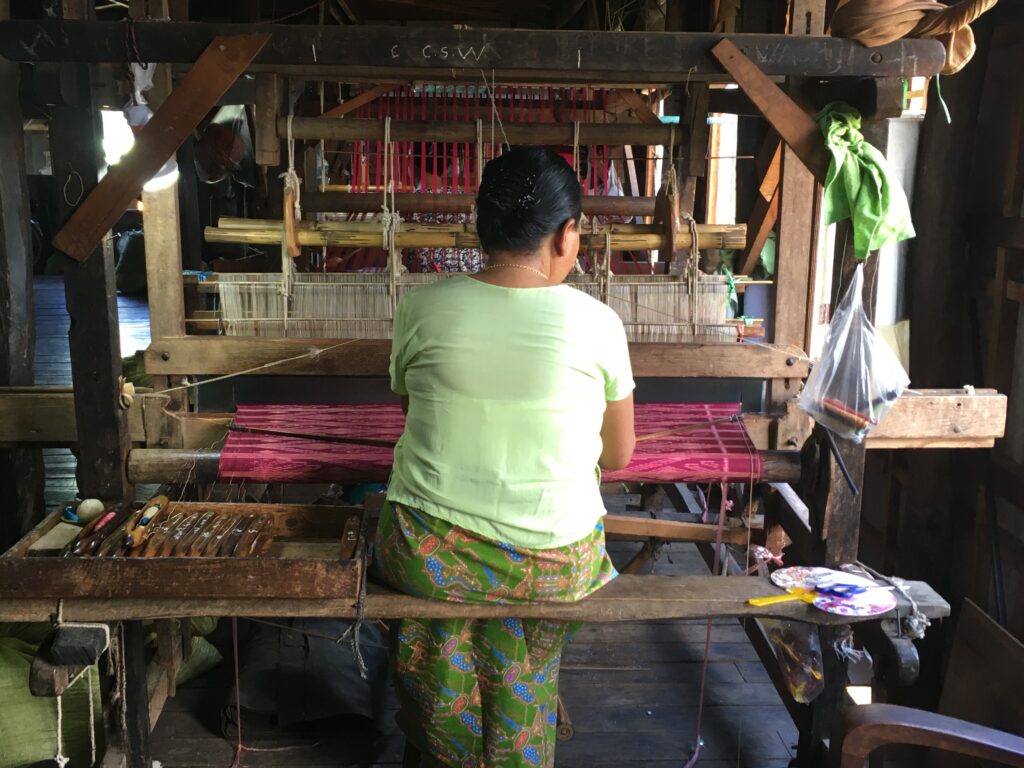
We had a great few days learning more about the different ways of life in Myanmar, both on land and on water. It was a valuable reminder that to be happy, we don’t need much.
And the pregnant lady from the first homestay? Soomin texted to let me know she had the baby after 10 months of pregnancy (yes you read that right!).
If you have any further questions about visiting Myanmar or planning this hike please reach out in the comments, we’d love to help!
